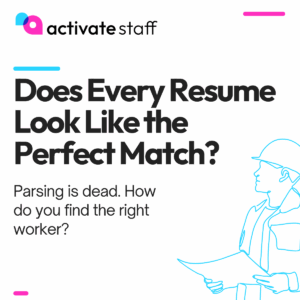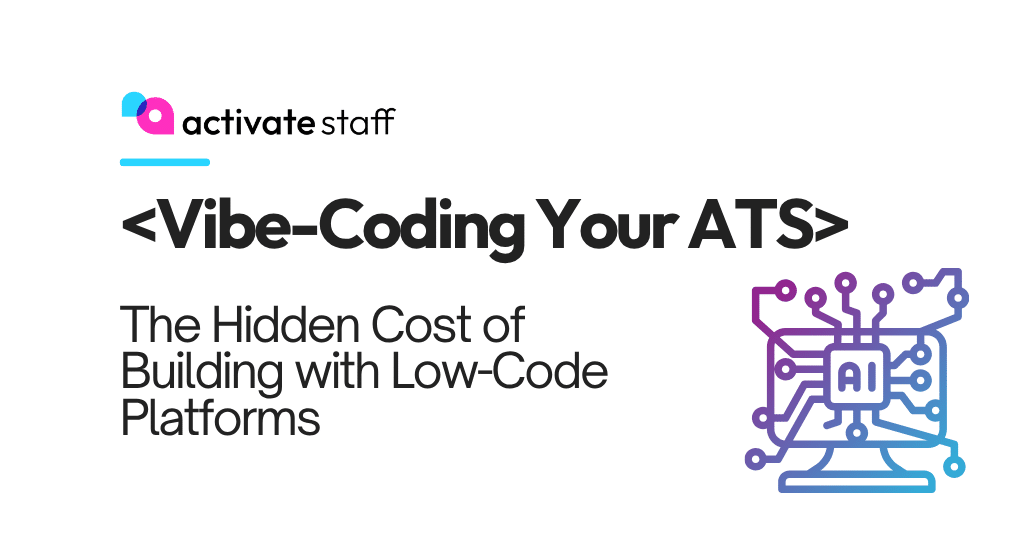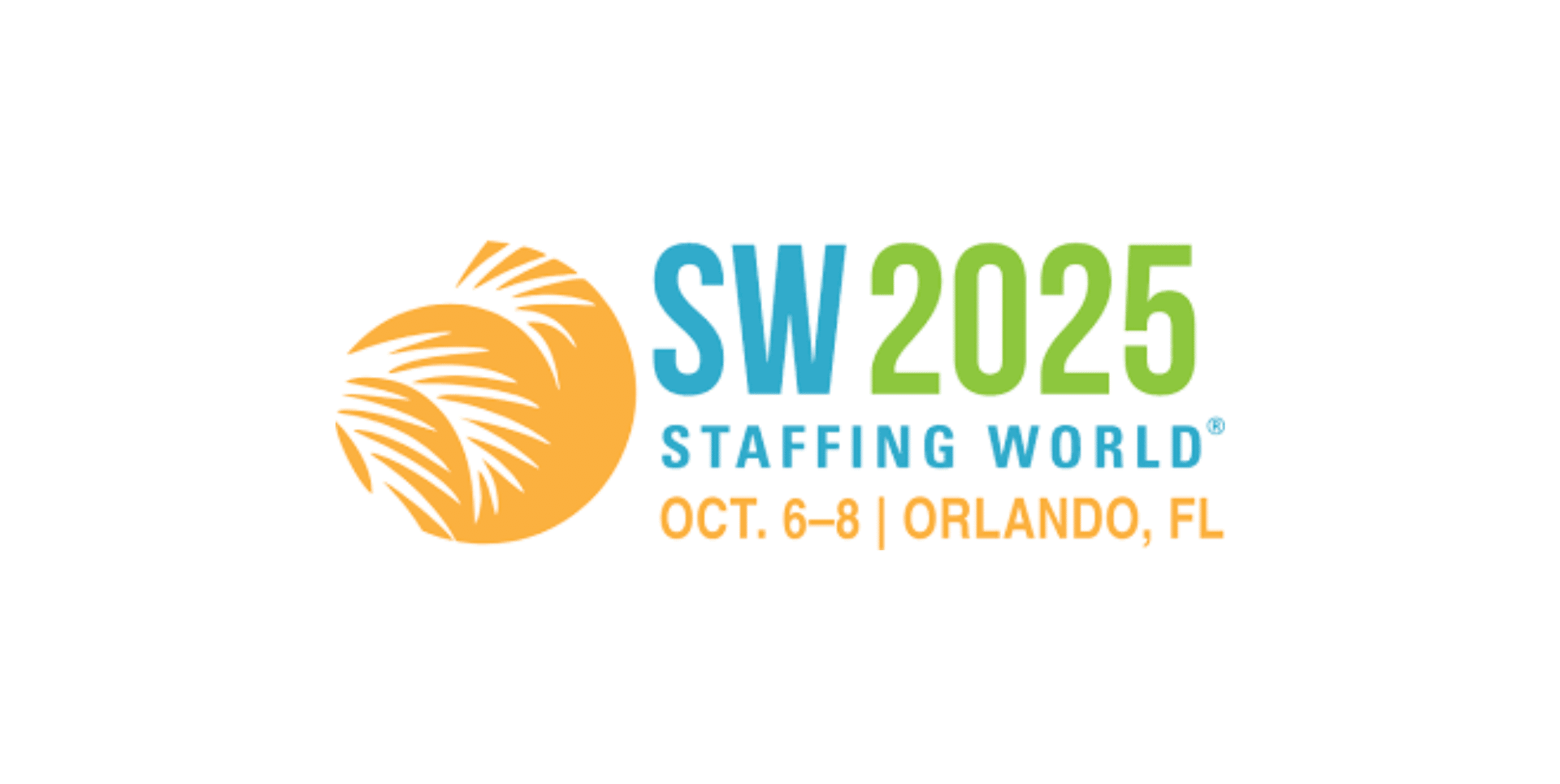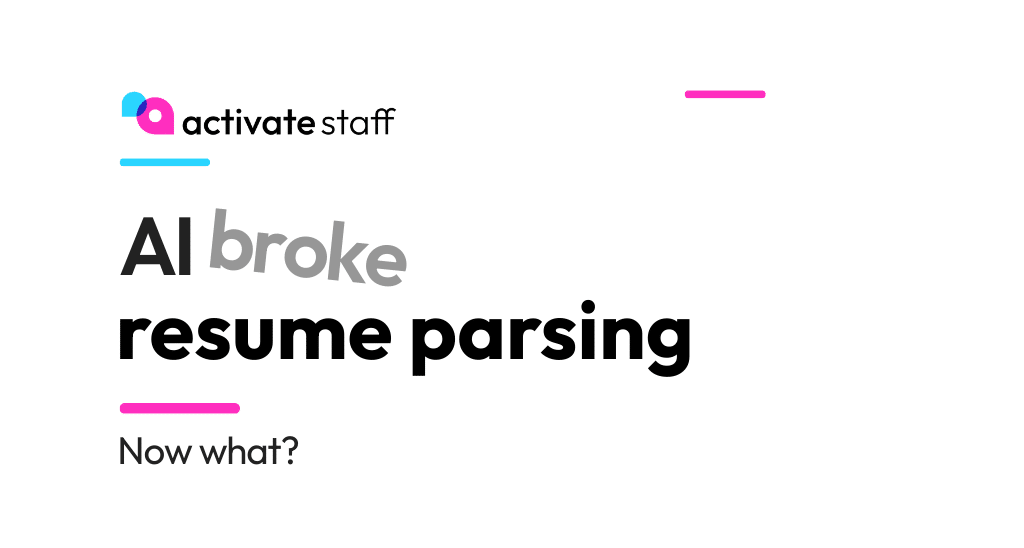For a long time, resume parsers were magic.
They turned messy, inconsistent documents into structured, searchable data. Tools like Daxtra, Sovren, and Textkernel helped recruiters surface the right candidates faster, extracting contact info, employment history, skills, and job titles with remarkable accuracy.
It wasn’t perfect, but it was a huge leap from manually reading every resume. Resume parsing became a critical layer in every ATS and VMS, enabling smarter searches, better matches, and streamlined workflows.
In short, resume parsers made modern recruiting possible. But everything that made them powerful is now working against them.
Here’s 5 reasons why we’re entering a post-resume, post-parsing era:
1. AI Has Made Resume Writing a Commodity
What used to be a reflection of experience is now a reflection of prompt engineering. With ChatGPT, Rezi, and hundreds of other tools, anyone can spin up a polished, optimized resume in seconds. Titles, bullet points, and skills are tailored to job descriptions with uncanny precision.
The result? Every resume looks like a perfect match. Keyword-based systems can’t tell what’s real and what’s fabricated. Parsing engines, built to reward consistent structure and language, are now being gamed by AI.
2. Static Taxonomies Can’t Keep Up
Resume parsers rely on rigid ontologies, thousands of manually maintained terms and mappings. That worked in a slower world.
But job titles today are fluid. A “Machine Operator” might be listed as a “Production Technician.” An “Event Staff” role could show up as “Brand Ambassador” or “Logistics Crew.” In healthcare, a “Nursing Aide” might be posted as a “Patient Support Specialist.” New variations appear every year, and the same job can be described in dozens of ways, especially across different employers or job boards.
Taxonomy-based matching breaks down when the language of work evolves faster than the taxonomy can.
3. LLMs Don't Parse, They Understand
While resume parsers focus on fields and formats, large language models like GPT-4 understand nuance.
- They can tell that a candidate who assisted with daily living tasks, supported patient mobility, and followed care protocols is likely a capable nursing aide, even if the title just says “Caregiver.”
- They can summarize a resume, evaluate cultural fit, generate follow-up questions, or compare it directly to a job posting.
This isn’t parsing. It’s reasoning. And it’s fundamentally better suited for modern recruiting.
4. Recruiters Are Changing How They Work
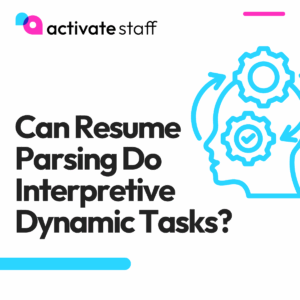
- “Who are five under-the-radar candidates with large event experience and a background in promotions?”
- “Which of these applicants shows growth potential, even if they lack a traditional title?”
- “Write me a first message that shows I actually read their resume.”
These are conversational, dynamic tasks, and LLMs excel at them. Resume parsers are not built for this.
5. We’re Moving Beyond Resumes Entirely
In staffing, we’re seeing a shift:
- Candidates are applying through quick mobile sign-ups, SMS, or chat, not uploading resumes.
- Work history is verified through shift ratings, time-tracking data, or supervisor feedback.
- Availability, location, and shift preferences are updated in real time.
- Digital worker profiles act as living records, capturing what a person can do, where they’ve worked, and how reliably they show up.
A static resume no longer reflects who someone is or how they perform. And without resumes, there’s nothing left to parse.
So how do agencies adapt to this new model?
Some will wait and hope their parsing vendors catch up. Others will choose an ATS with built-in language models that actually help them understand people, not just paperwork.
The best recruiting tools won’t try to read resumes. They’ll help you read between the lines. The future of recruiting is interpretive, dynamic, and conversational.
You don’t need a parser. You need a partner.


